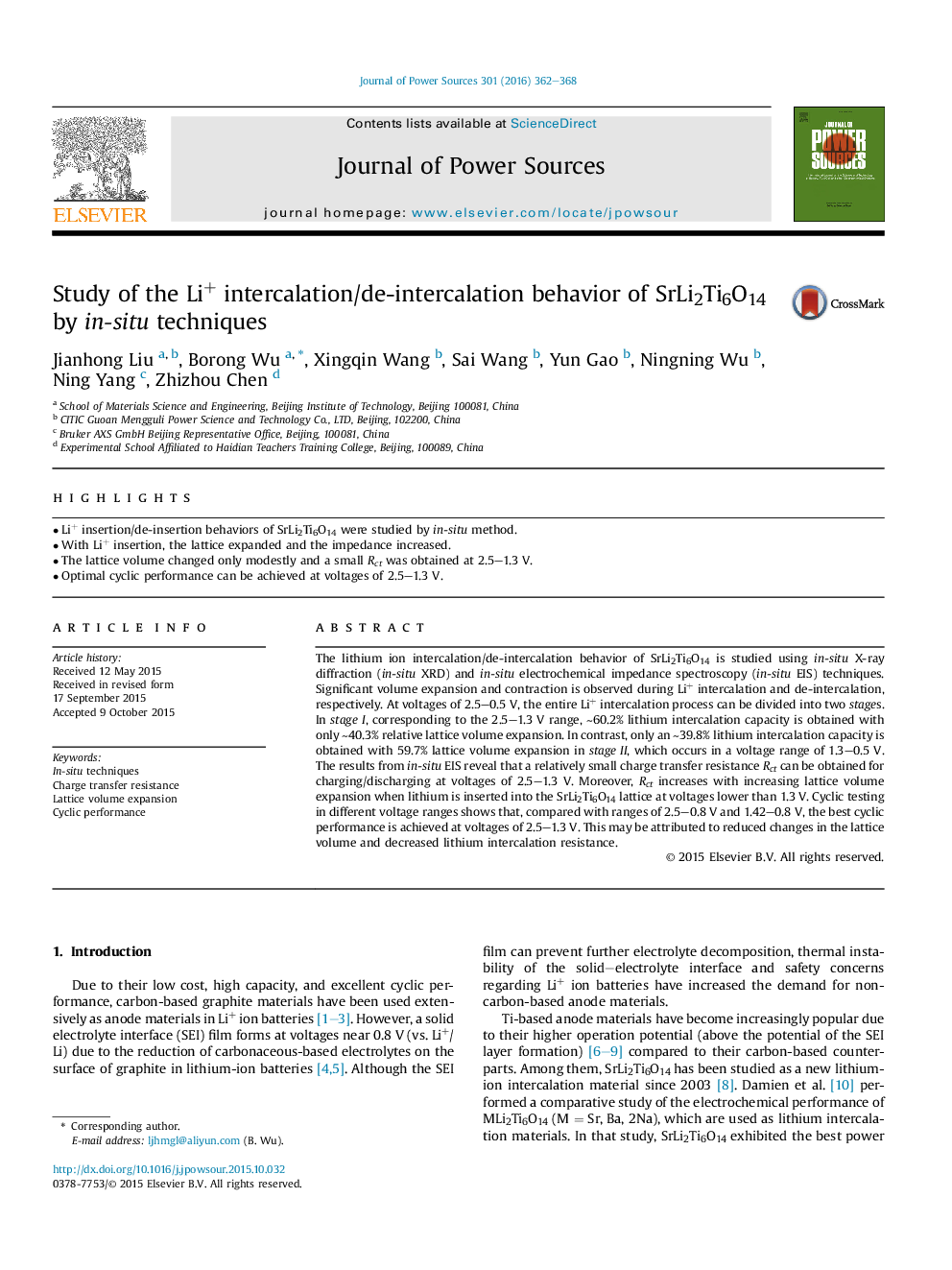| Article ID | Journal | Published Year | Pages | File Type |
|---|---|---|---|---|
| 7730070 | Journal of Power Sources | 2016 | 7 Pages |
Abstract
The lithium ion intercalation/de-intercalation behavior of SrLi2Ti6O14 is studied using in-situ X-ray diffraction (in-situ XRD) and in-situ electrochemical impedance spectroscopy (in-situ EIS) techniques. Significant volume expansion and contraction is observed during Li+ intercalation and de-intercalation, respectively. At voltages of 2.5-0.5Â V, the entire Li+ intercalation process can be divided into two stages. In stage I, corresponding to the 2.5-1.3Â V range, â¼60.2% lithium intercalation capacity is obtained with only â¼40.3% relative lattice volume expansion. In contrast, only an â¼39.8% lithium intercalation capacity is obtained with 59.7% lattice volume expansion in stage II, which occurs in a voltage range of 1.3-0.5Â V. The results from in-situ EIS reveal that a relatively small charge transfer resistance Rct can be obtained for charging/discharging at voltages of 2.5-1.3Â V. Moreover, Rct increases with increasing lattice volume expansion when lithium is inserted into the SrLi2Ti6O14 lattice at voltages lower than 1.3Â V. Cyclic testing in different voltage ranges shows that, compared with ranges of 2.5-0.8Â V and 1.42-0.8Â V, the best cyclic performance is achieved at voltages of 2.5-1.3Â V. This may be attributed to reduced changes in the lattice volume and decreased lithium intercalation resistance.
Related Topics
Physical Sciences and Engineering
Chemistry
Electrochemistry
Authors
Jianhong Liu, Borong Wu, Xingqin Wang, Sai Wang, Yun Gao, Ningning Wu, Ning Yang, Zhizhou Chen,
